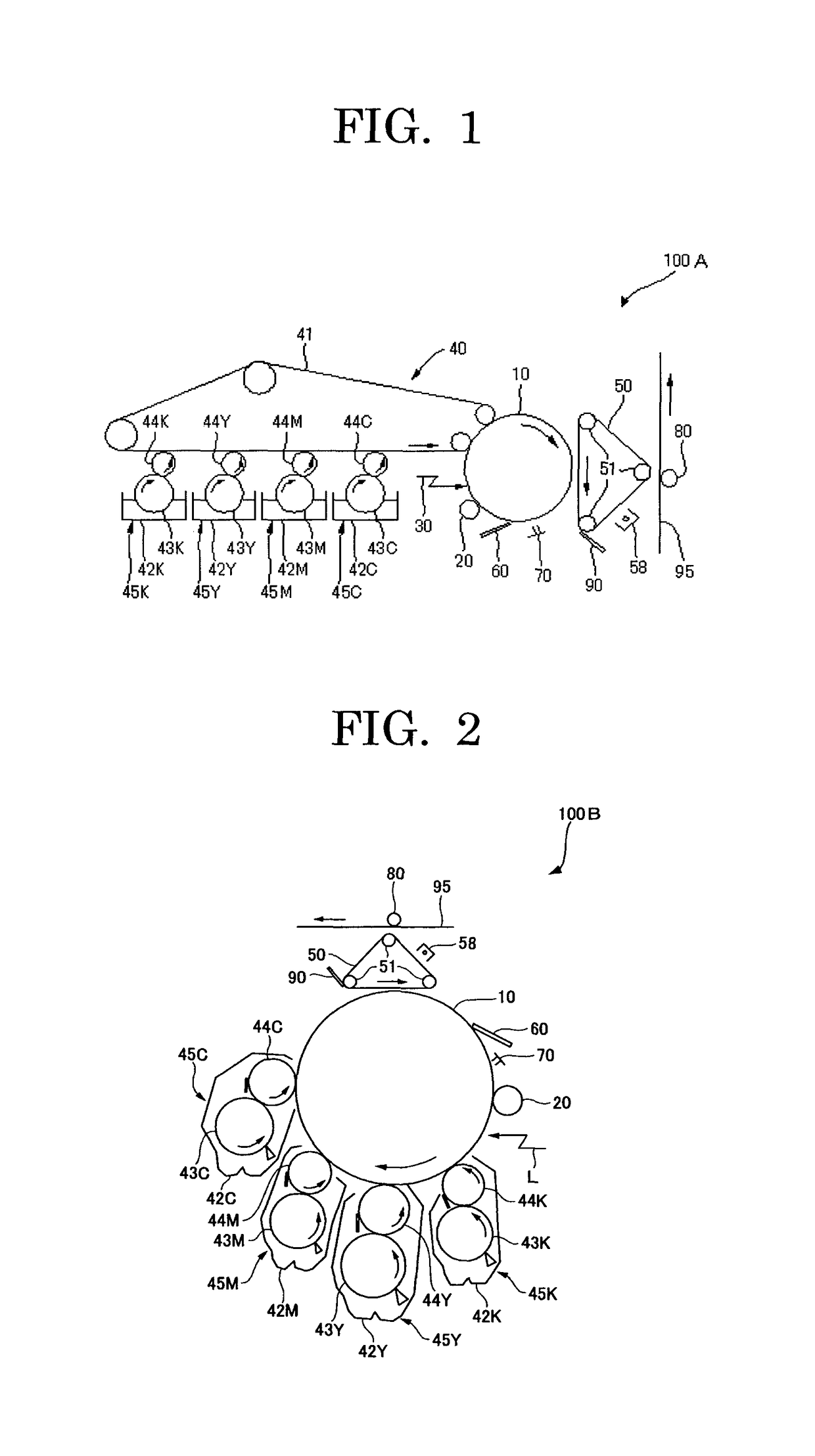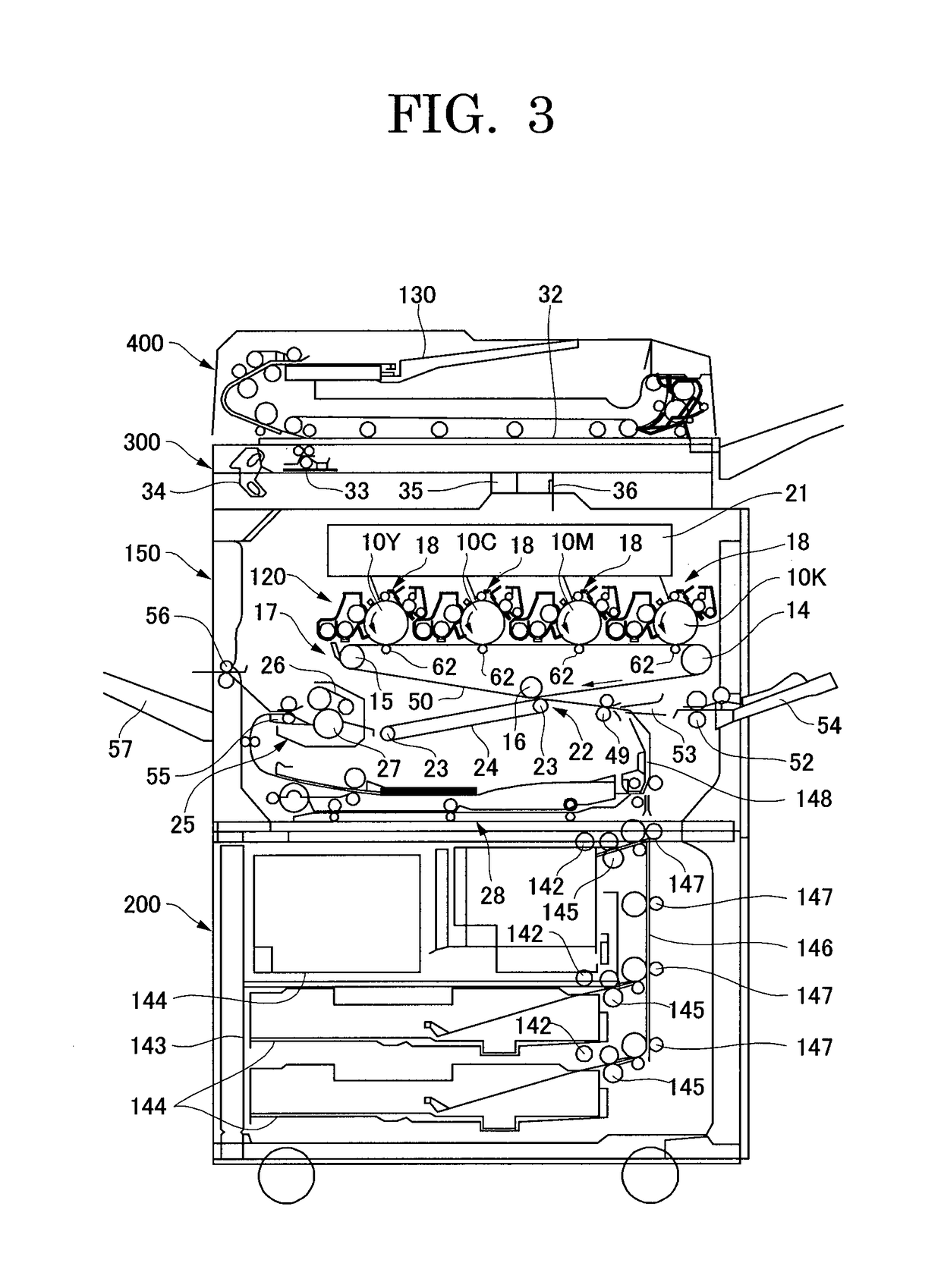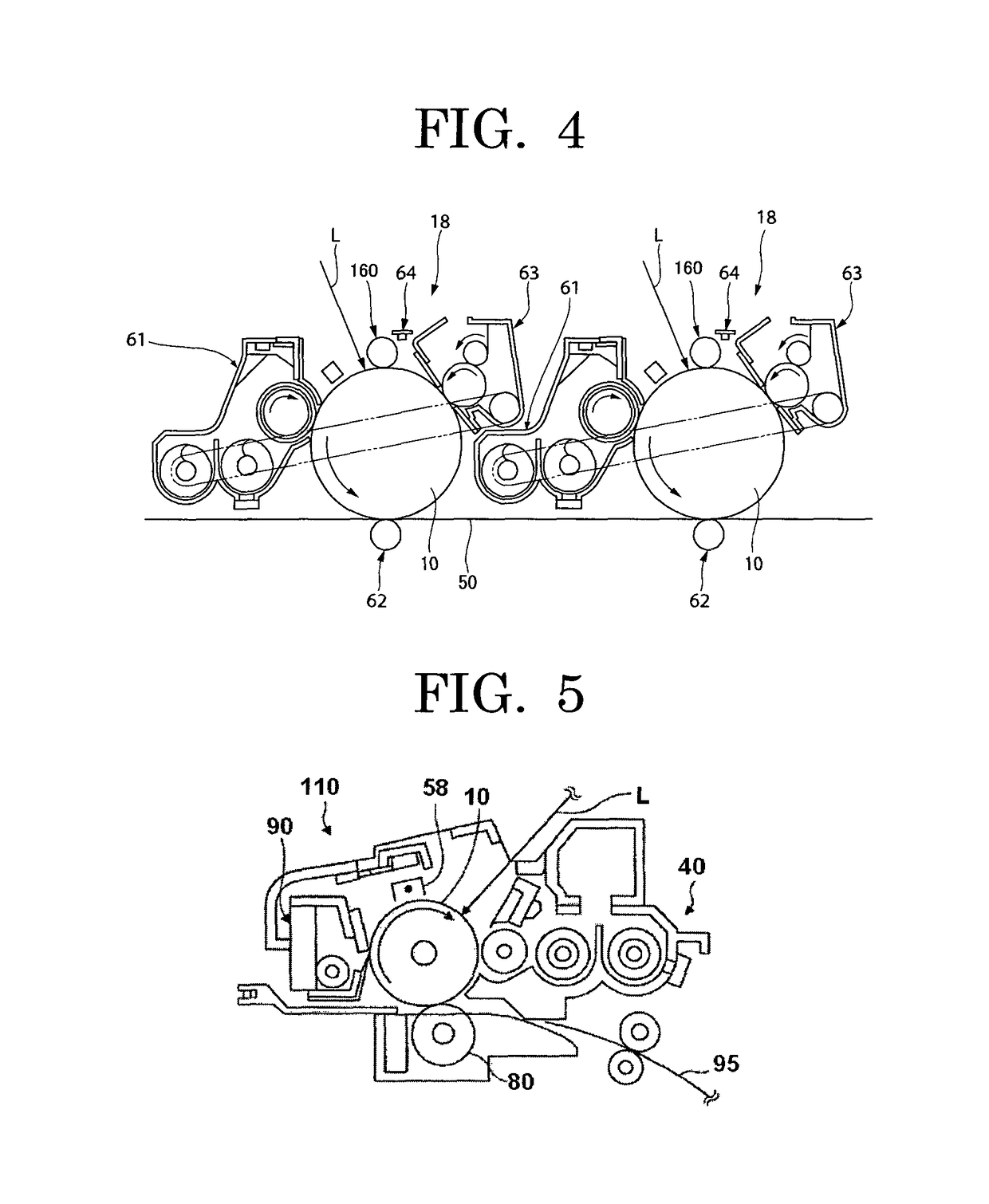Toner, image forming apparatus, image forming method, and process cartridge
a technology of image forming apparatus and process cartridge, which is applied in the direction of electrographic process apparatus, electrographic process, instruments, etc., can solve the problems of heat resistance storage ability impairment, heat resistance storage stability, and the inability to transfer temperature, so as to improve the low-temperature fixing property, heat resistance storage stability, and the effect of hot-offset resistan
- Summary
- Abstract
- Description
- Claims
- Application Information
AI Technical Summary
Benefits of technology
Problems solved by technology
Method used
Image
Examples
example 1
Production of Pulverized Toner
>
[0303]Polyester resin A1: 26 parts by mass
[0304]Polyester resin B2: 31 parts by mass
[0305]Composite resin C: 10 parts by mass
[0306]Colorant (carbon black): 9 parts by mass
[0307]Release agent 4 parts by mass
[0308](Carnauba wax; melting point: 81° C.)
[0309]Charging controlling agent 1 part by mass
[0310](Monoazometal complex)
[0311](Chromium complex salt dye, BONTRON S-34, manufactured by Orient Chemical Industries Co., Ltd.)
[0312]Calcium carbonate 20 parts by mass (SOFTEN-3200, manufactured by BIHOKU FUNKA KOGYO CO., LTD.)
[0313]Toner raw materials were premixed in accordance with the above formulations presented in the following Table 3-1 using HENSCHEL MIXER (FM20B, manufactured by Mitsui Miike Machinery Co., Ltd.) and then melt-kneaded at a temperature of 120° C. using a biaxial kneader (PCM-30, manufactured by IKEGAI LTD.). The resultant kneaded product was rolled to a thickness of 2.7 mm with a roller, then cooled to room temperature by a belt cooler ...
examples 2 to 22
[0344]Toners 2 to 22 were produced in the same manner as in the production method of Toner 1 described in Example 1, except that toner raw materials were incorporated as described in Table 3-1, a temperature condition during melt-kneading was changed to 130° C. for Examples 8 and 15, to 140° C. for Examples 10 and 16, and to 150° C. for Examples 11 and 17.
[0345]Each of Toners 2 to 22 was measured for the molecular weight distribution (main peak, half value width) and the Ca content in the same manner as in Toner 1. Results are shown in Table 3-2.
[0346]Developers 2 to 22 corresponding to Toner 2 to 22 were produced from Toners 2 to 22 in the same manner as in Example 1.
[0347]The image forming apparatus containing each of Developers 2 to 22 were used to evaluate low-temperature fixing property, hot-offset resistance, heat resistance storage stability, and charging property in the case of using each of Developers 2 to 22 in the same manner as in Example 1. Results are shown in Table 4....
PUM
| Property | Measurement | Unit |
|---|---|---|
| molecular weight distribution | aaaaa | aaaaa |
| molecular weight distribution | aaaaa | aaaaa |
| softening temperature | aaaaa | aaaaa |
Abstract
Description
Claims
Application Information
 Login to View More
Login to View More - R&D
- Intellectual Property
- Life Sciences
- Materials
- Tech Scout
- Unparalleled Data Quality
- Higher Quality Content
- 60% Fewer Hallucinations
Browse by: Latest US Patents, China's latest patents, Technical Efficacy Thesaurus, Application Domain, Technology Topic, Popular Technical Reports.
© 2025 PatSnap. All rights reserved.Legal|Privacy policy|Modern Slavery Act Transparency Statement|Sitemap|About US| Contact US: help@patsnap.com



